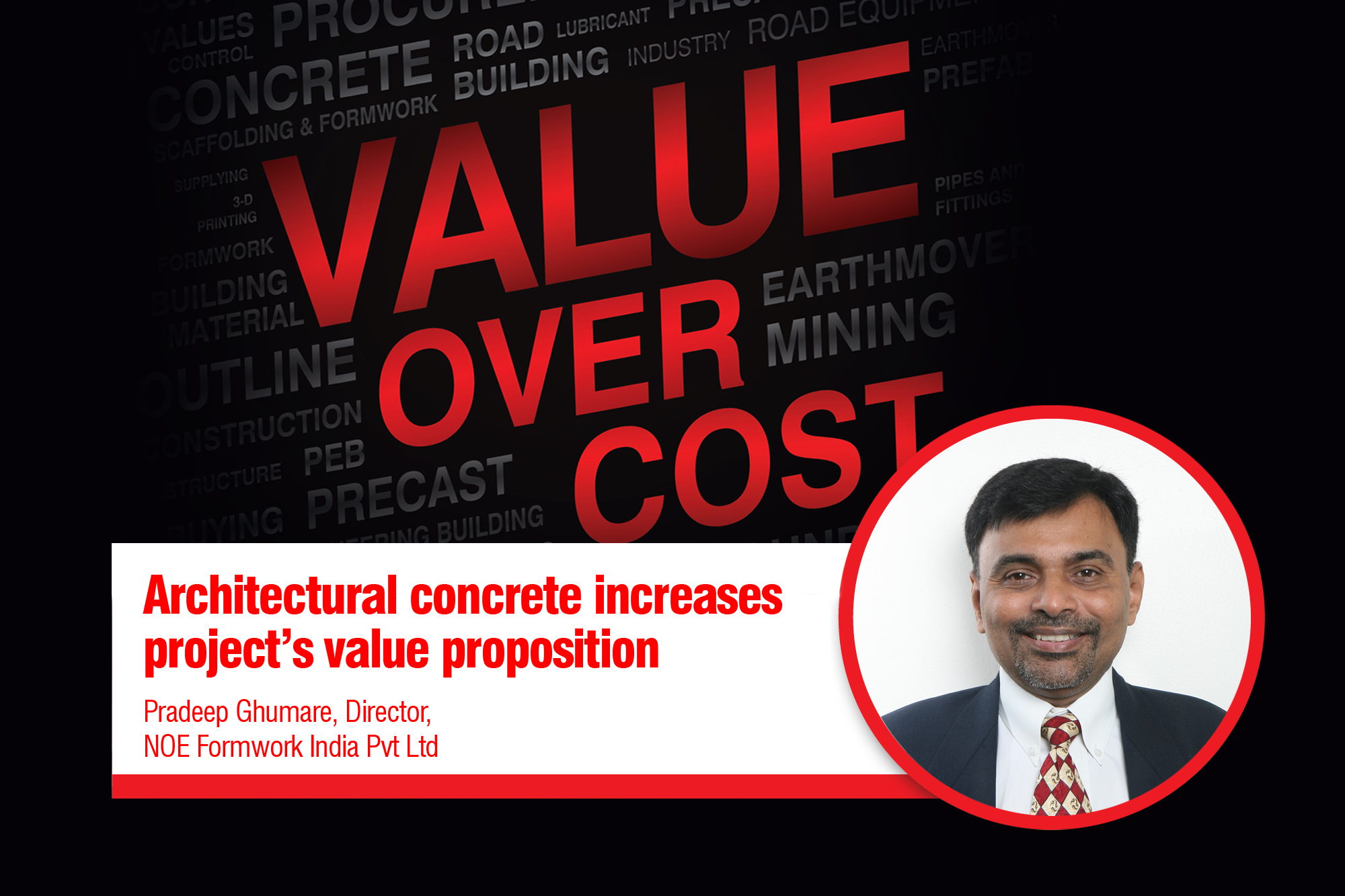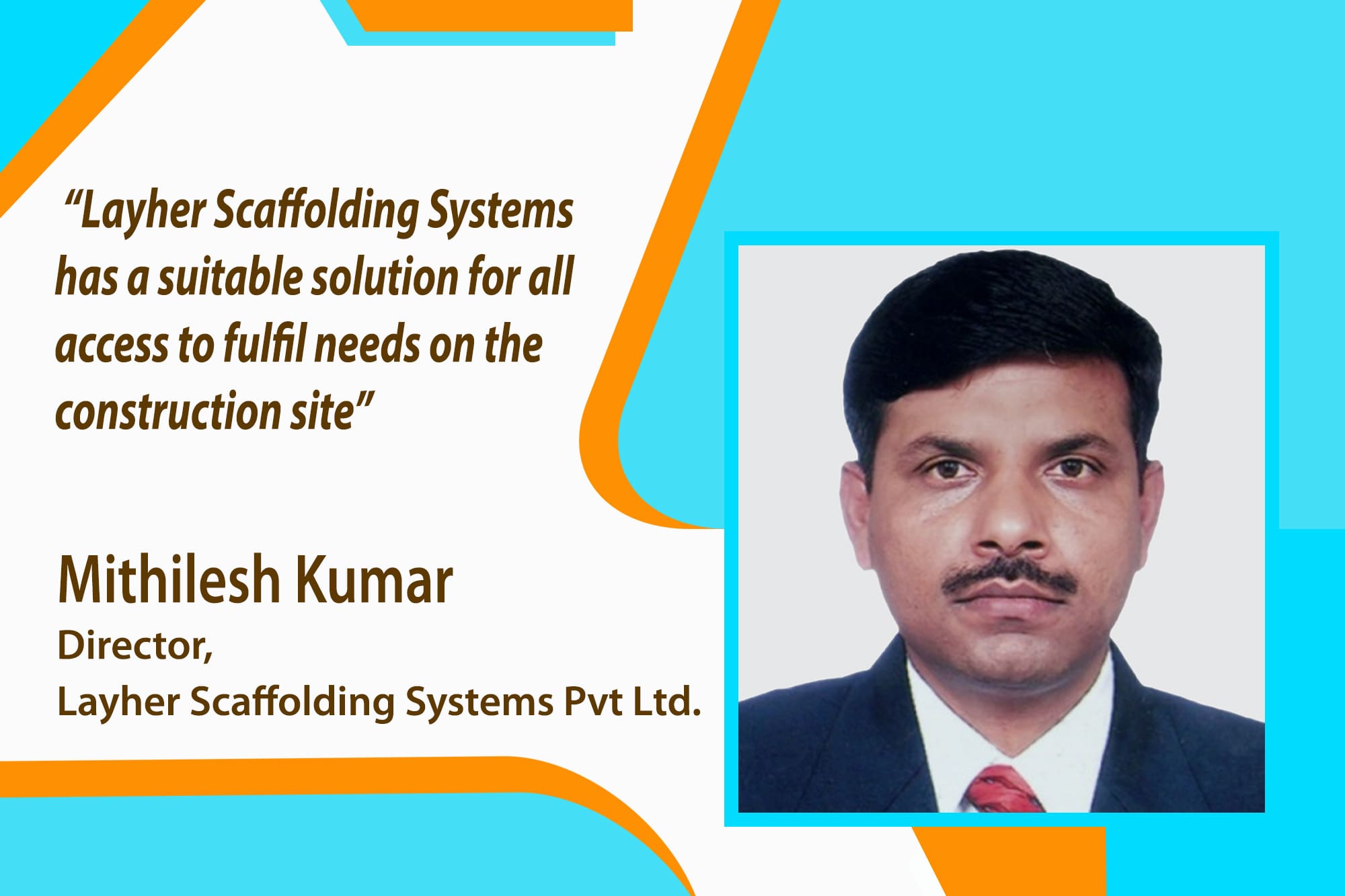Architectural concrete increases project’s value proposition
By Edit Team | November 2, 2018 11:52 am SHARE

Procurement is not merely about the price. Value comes in a multitude of areas making each having the potential to change the face of the procurement industry.
Architectural concrete
“The latest technology by NOE Formwork is architectural/decorative exposed concrete,” says Pradeep Ghumare, Director, NOE Formwork India Pvt Ltd.
Buildings and public infrastructures are often seen as purely functional. The plain concrete building or structure can have an impression of cold, uninvolving utilitarianism impact on their surroundings.
Architectural concrete is a subset that provides aesthetic and decorative finish to its structural capabilities. It “brings life” to the “dead look” concrete, and enhances the appearance of buildings and infrastructural projects by creative architecture and expressive aesthetics. Here, concrete becomes the design building material, besides fulfilling the structural and functional aspects, providing uniqueness through form, surface, colour and finish of contemporary architecture.
Amalgamating trend
According to Ghumare, the recent trend is to merge architecture and structural engineering. “Architectural concrete adds a different dimension to the buildings, bridges, metros, retaining walls and other concrete structures, which otherwise would have been ignored by the daily public passing by. It converts a simple concrete building into an iconic structure,” he says.
Because of its versatility, concrete offers endless design possibilities. Moreover, concrete permanently captures the chosen look. Concrete allows room for innovation meeting design objectives that cannot be achieved with other materials, he believes.
Exposed concrete with innovative decorative methods is the name of the game, which are not only gorgeous, but also affordable. Formliners provide a cost-effective and durable means of applying appealing design finishes to a wide variety of concrete structures, often replacing plasters, tiles, etc.. Applications range from buildings, bridge abutments, among others.
Concrete can easily replicate the high-end look of masonry, marble, cut stone and even exotic and sculpted motifs in both physical beauty and durability. Additionally, special coatings on concrete can enhance its life and durability; help reduce NOx and pollution. It gives developers, builders, government authorities a way to personalise their buildings and structures – blend with the scenery and surroundings so that they contribute towards Smart City.
“Achieving an architectural and decorative appearance requires that something different be done to the concrete….without plastering, painting or cladding on concrete,” he says.
Considering the life-cycle cost of the project and usage of architectural concrete, the “value” surpasses the “actual cost” incurred for achieving architectural concrete. Moreover, the value proposition it offers is that it eliminates post-cladding material cost, its labour cost involved for post-cladding, its maintenance and replacement cost contribution towards IGBC credits for fulfilling green building norms, and lastly, being concrete, the overall life of architectural concrete is as long as concrete’s life.
Plain concrete building or structure can have an impression of cold, uninvolving utilitarianism impact on surroundings.
Pradeep Ghumare, Director, NOE Formwork India Pvt Ltd
Cookie Consent
We use cookies to personalize your experience. By continuing to visit this website you agree to our Terms & Conditions, Privacy Policy and Cookie Policy.




































-20240213125207.png)

























